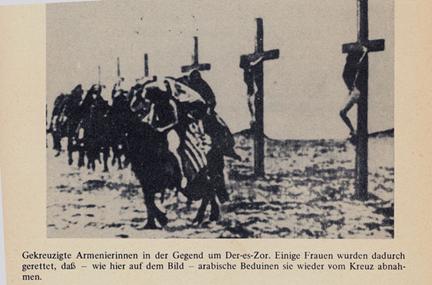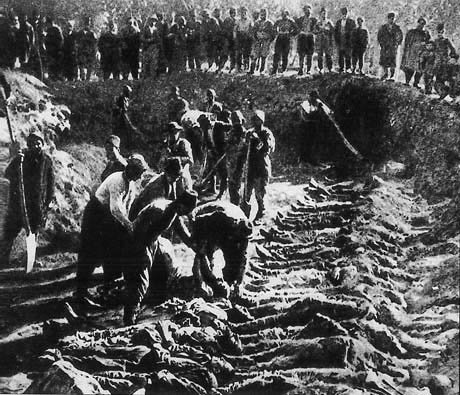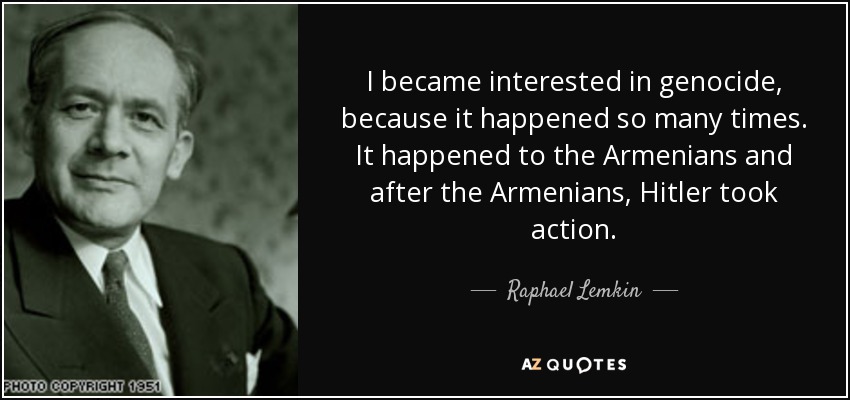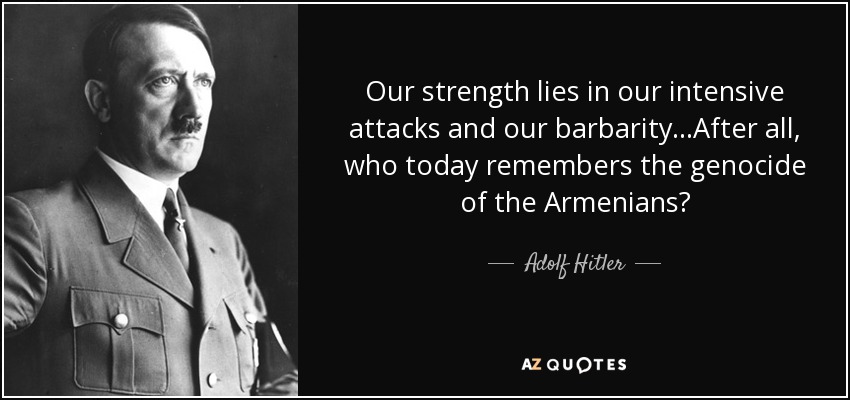
Today marks the 102nd anniversary of the Armenian Genocide.
The Armenian Genocide was the Ottoman Empire's (now Turkey) government's systematic extermination of its minority Armenian population from their historical homeland in the territory that is present day Turkey.
It took place during World War I and was comprised of the killing of the able-bodied male population through massacre and forced labor, and the forced deportation of women, children, the elderly and disabled on death marches to the Syrian Desert.
The total number of Armenians killed as a result of the Armenian Genocide is estimated to be approximately 1.5 million.
It is acknowledged to have been one of the first modern genocides, as scholars point to the organized manner in which the killings were carried out to eliminate the Armenians, and it is the second most-studied case of genocide after the Holocaust. The word "genocide" was created by Raphael Lemkin in order to describe what had happened to the Armenians.
The starting date of the genocide is held to be April 24, 1915, the day when Ottoman authorities arrested some 250 Armenian intellectuals and community leaders in Constantinople. Thereafter, the Ottoman military uprooted Armenians from their homes and forced them to march for hundreds of miles towards extermination camps, depriving them of food and water, to the desert of what is now Syria. Massacres were indiscriminate of age or gender, with rape and other sexual abuse commonplace.
Examples of forms of torture and murder included mass burnings, mass drownings, mass death marches, and use of poison/drug overdoses for in particular children including morphine overdose, toxic gas, and typhoid inoculation.
Turkey has faced repeated calls to accept the events of the genocide, but refuses to do so. It is likely due to fears of having to pay reparations, as Turkey financially profited from the Armenian Genocide. Besides the mass killings of the Armenian people, a government order was also enforced that all financial institutions must turn over all Armenian assets to the government (about 6 million Turkish gold pounds were seized along with real property, cash, bank deposits, and jewelry).
The Armenians lost all their wealth and property. Businesses and farms were lost, and all schools, churches, hospitals, orphanages, monasteries, and graveyards were confiscated and became Turkish state property. The likes of Istanbul's Ataturk airport, US air base, Turkey's historic presidential palace, and several other significant landmarks across Turkey - have been built on land that was owned by Armenians and seized by the government during the genocide.
To date, 28 countries including France, Canada, Russia, Greece, The Netherlands & Switzerland have officially recognized the events of the period as genocide, and the majority of genocide scholars and historians accept that it was indeed a genocide.
In recent years, the likes of Germany, Austria & Bulgaria have also formally recognized the Armenian Genocide - a massive blow to the Turkish Government. This is because all three nations were allies to the Ottoman Empire during World War I, and were eye witnesses to the genocide happening. In fact, Germany in some cases helped the Turks to commit the genocide.
Here is a quote from General von Schellendorf , who in 1915 was the head of Germany's military within the Ottoman Empire.
The Armenian is just like the Jew, a parasite outside of the confines of his homeland, sucking the marrow of the people of the host country. Year after year they abandon their native land—just like the Polish Jews who migrate to Germany—to engage in usurious activities. Hence, the hatred which, in a medieval form, has unleashed itself against them as an unpleasant people, entailing their murder.
You will find below photos of the events of the Armenian Genocide. You may find some photos DISTURBING, but what I have posted below is in fact extremely tame compared to other photos which show Armenians during the genocide being crucified to crosses, beheaded, babies being ripped out of pregnant Armenian women's wombs, and Armenian babies being dismembered using contraptions to cut them in half.
Note that torture against the Armenians by the Turks during the genocide was prevalent & encouraged by the Ottoman government...

In a New York Times communiqué filed on November 12, 1916, the German Consul at Mosul "had in many places seen such quantities of chopped-off hands of little children that the streets might have been paved with them." Armenians "had their eyebrows plucked out, their breasts cut off, their nails torn off; their torturers hew off their feet or else hammer nails into them just as they do in shoeing horses." Citing a witness, Samuel Bartlett of Toronto, the New York Times continued, "the Turks also took all the babies in the town and threw them into the river until it overflowed its banks. They let out the priests, put red-hot iron shoes on their feet, tied them to wagons and forced them to walk long distances." Summarizing the execution plan of the genocide, Colonel Hawker (New York Times, June 7, 1919) states: "The Turkish plan was to take all the able-bodied men from the community and tie them up. Then they would torture them by cutting their flesh and burning their wounds. Finally, they would cut off their heads in the presence of the wives and children of the victims. The old men, women and children were [then] herded together and driven from place to place." Ambassador Morgenthau reflects on the perpetrator psychology behind these atrocities that "the basic fact underlying the Turkish mentality is its utter contempt for all other races ... [There is] a total disregard for human life and an intense delight in inflicting physical suffering." Morgenthau concludes soberly that a "fairly insane pride is the element that largely explains [this behavior].
After a review of thousands of pages of accounts, five characteristics of the Armenian genocide stand out:
- Sexual atrocities and bodily mutilation were integral to the genocidal process.
- Turks competed with pride to develop the most diabolical methods of torture (i.e., horseshoeing men; mutilation of ear, nose and eyes; women's severed breasts and nipples collected for display; stuffing steel wool up a man's anus and into his penis; progressive dismemberment of victim limbs).
- Intimate tortures and prolonged deaths were the preferred approach.
- Family members were, wherever possible, required to witness atrocities.
Methods of degradation were, wherever possible, designed to maximize perpetrator amusement.
Also, it was very common for Armenian woman during the genocide to be raped, and also had their faces and bodies tattooed by the Turks...

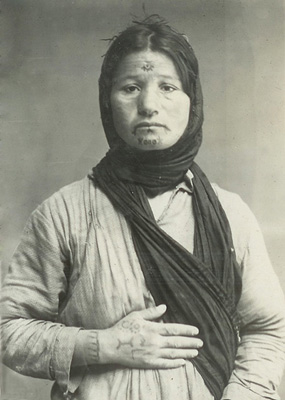
Armenians were also being crucified by the Turks...
""Crucified Armenian women in the region of the Der-es-Zor - picture taken by Arab Bedouins who took them back down from the cross"
